Slave Labor
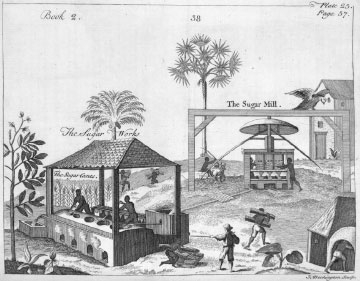
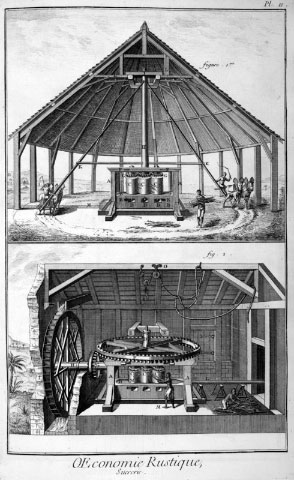
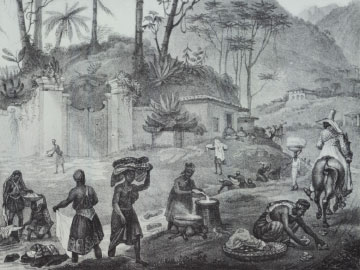
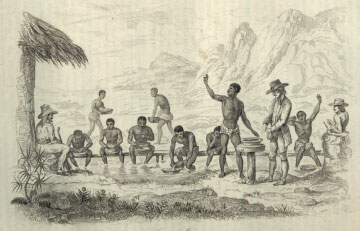
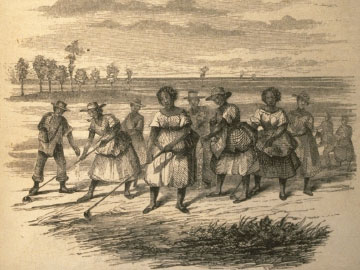
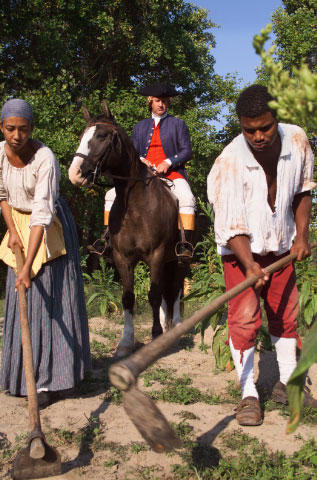
The western popular image of slavery in the Americas is of enslaved men, women, and children working in agricultural fields. Though the vast majority of Africans were bought by American slave owners for field work, enslaved people could be found in most occupations in the Americas. But there were great variations in slavery across the Americas, much depending on the dominant local crop and geography, as well as the regional economic, political, and legal systems in place at any given time.
A number of enslaved males were forced to work as seafarers. Some even worked on slave ships. Other laborers were employed on sailing craft in inland waters and on the river systems that formed critical commercial links to the American interior. The itineraries of seafaring vessels sometimes offered runaway slaves a means to leave colonial bondage.
In parts of Brazil and the Caribbean, where African slave labor on sugar plantations dominated the economy, most enslaved people were put to work directly or indirectly in the sugar industry. There was a complex division of labor needed to operate a sugar plantation. Sugarcane field workers worked long hours planting, maintaining, and harvesting the sugarcane under hot and dangerous tropical conditions. The field slaves had to cut down acres of sugarcane and transport it to a wind-, water-, or animal-driven mill, where the juices were extracted from the crop. Factory slaves worked under hot, humid, and dangerous conditions to convert the sugarcane into sugar and rum. Skilled men, such as carpenters, maintained the factory and equipment.
Other laborers produced foodstuffs to feed the owner and slaves. Others tended to the cattle and horses needed to operate some of the heavy equipment and transport the products. After the sugarcane-derived products were produced, slave labor was used to transport the commerce to barges and ships for export into the Atlantic economy. Domestic slaves maintained the households and served the slaveowner’s family. Other agricultural crops also required a diversity of slave labor to support the plantation operations.
There were various forms and conditions of forced labor for enslaved Africans and their descendants. In the colonial British Caribbean and North America, some worked alongside free people, Native Americans, or white indentured laborers. In colonial British North America, there were two major forms of labor—gang labor and task labor. In tobacco and in rice, slaves were given tasks to do, and their work essentially finished when the task was completed. By comparison, field gangs worked in sugar cultivation throughout the daylight hours and around the clock during harvest season. Yet even in sugar, this intense regime lasted for six months of the year. The other six months were devoted to planting and tending the fields, which was less onerous work than cane-cutting.
European and American governments created brutal legal systems that varied greatly, according to region, but generally sought to defend coercive labor practices, allow for innovations in the slave system, and maintain the property of slaveholders whenever possible. Slave owners everywhere often needed more enslaved laborers during the harvest season than they did throughout the rest of the year. The problem was solved by renting out slave gangs: groups of slave laborers used to undertake specific work (such as road building and field clearing) who were then returned to their owners. Colonies that depended on slave labor devised systems that facilitated the movement of enslaved people among plantations, from country to town, between one form of work and another, as needed.
Domestic slavery was ubiquitous. We do not know the figures, but countless numbers of men, women, and children labored in the homes of slave owners across the Americas. Compared to field slaves, they faced distinct difficulties and dangers. A harsh mistress or sexually aggressive master could make a domestic slave’s life miserable and painful. Female and male slaves faced sexual dangers wherever they worked. Their male and female owners, including immediate family members, relatives and friends (and even the casual stranger) regarded enslaved people as their legal property to use at their leisure. Without any legal protection for themselves or their families, enslaved people were constantly vulnerable to sexual abuse by white Europeans and Americans, male or female.
The misery of life as an enslaved person cannot be measured simply by the nature of the work they performed for their owners. Moreover, their work was never ending until death. Those forced to labor in sugarcane fields of the Caribbean and Brazil faced especially high mortality rates due to tropical environments and working conditions, as did enslaved people who worked in swampy rice fields. Large numbers of enslaved males also worked in the punishing world of mining, notably for precious metals in Brazil and other parts of Central and South America.






